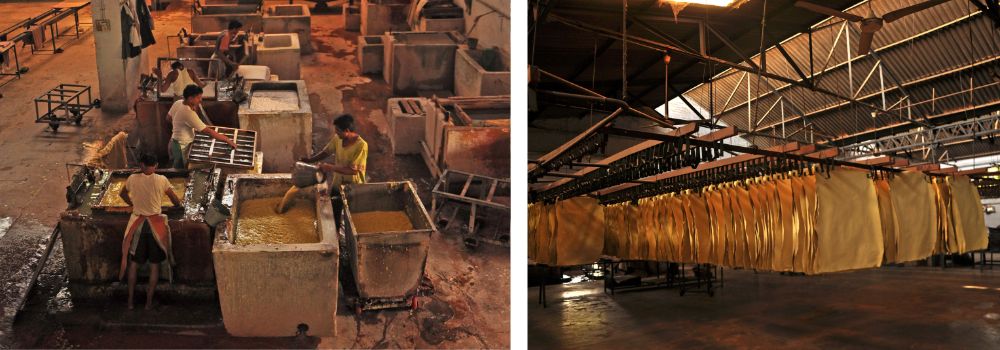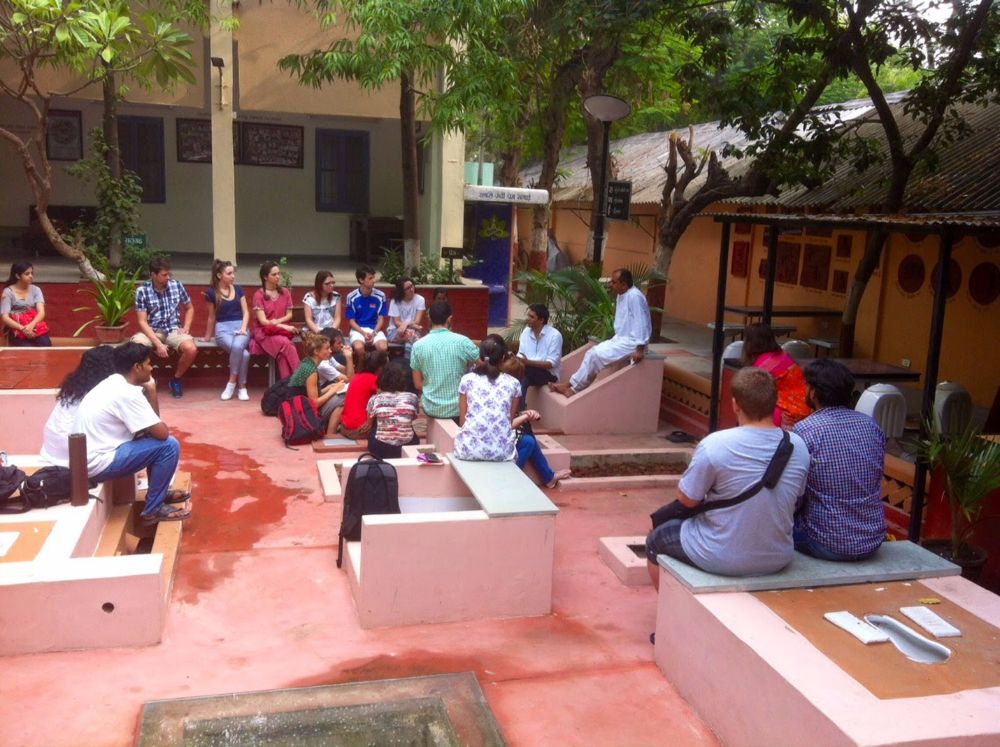Is There a Gandhian Way of Making Architecture and Place? A Case of the Sabarmati Ashram
Charles Correa was a young man of 28 when he got the opportunity to design a museum housing documents from Gandhi’s life on the banks of the Sabarmati river. This was the place where Gandhi had set up his ashram, where the historic Dandi march had begun. The MIT-returned Correa had just embarked on his architectural practice. The task of integrating the values of a man of Gandhi’s stature within the built work was by no means a small one. In doing so, Correa extracted the underlying thread of simplicity running through Gandhi’s philosophy. Even Prime Minister Jawaharlal Nehru commented on the day of the inauguration that unlike many of the museums he had seen before this, “There is nothing pretentious here, [it] is a very simple and lovely thing.”
The Gandhi Memorial Museum evokes the sense of a village. One meanders through streets and courtyards – a feeling enabled by an arrangement of pavilions. The choice of this module allows for future growth, and also gives architectural expression to Gandhi’s words – “I do not want my house to be walled on all sides and my windows be stuffed. I want the cultures of all the lands to blow about my house as freely as possible. But I refuse to be blown off my feet by any of them.”
Architect Riyaz Tayyibji shares an insight into Gandhi’s appreciation of design matters – the man had instituted the first ever design competition in India. Calling for charkha designs, “the prize money amounted to one lakh rupees,” he says, “which was a lot back in those days!” Another little known fact about Gandhi is that he was actually involved in designing several hospitals and institutions around the country, and Tayyibji’s Anthill Design has been involved in laboriously documenting these works over the past year.

On visiting Gandhi’s house, philosopher Ivan Illich had remarked,
When I look from the point of view of a simple Indian, I do not see why there should be a house bigger than this. This house is made of wood and mud. In its making, it is not the machine but the hands of man which have worked. I call it a hut but it is really a home. There is a difference between a house and a home.
Adding to this, Professor Neelkanth Chhaya talks about the fine sense that the buildings in the Ashram possess – of not luxury, but comfort – “comfort that requires you to be close to a natural way of living. The buildings are airy and ventilated, but they’re deeply shaded,” he says. “And then there is the idea that the inside should not be cut off from outside. That is one very wonderful quality of Gandhi ashram. That every room of the old buildings has a sense of extending outside – to the trees and birds.”
Chhaya’s studio has designed some later additions to the Ashram campus. Their interpretation of Gandhi’s approach is most striking in their design of the public toilets here. Toilets – typically places that are thought of as being unsanitary – are lent dignity through generous courtyards that bring in light and flora. A shop designed by them hovers above the ground, hesitatingly marking its footprint. It’s floating roof, suspended over a subdued white volume, suggests a sense of lightness, echoing Correa’s pavilions.

Today the road beside the Ashram is a bustling commercial spine. In a city strewn with vertical high-rises, it seems a relief that in the Museum there is a meandering horizontal plane to walk on, aimlessly and meditatively. A few years ago, a group of architects had proposed that walking should indeed be made an integral quality of the Ashram area. By diverting traffic from a particular stretch of Ashram road, the area could be pedestrianised. Because few who visit here – and the Ashram does receive a huge footfall – know that its activities are not just confined within the perimeters of its present walls. They extend around and beyond the congested Ashram road. Kalamkhush is the only khadi handmade paper manufacturing and retail unit in the city, the Gaushala employs advanced research to improve animal and agricultural productivity, the Safai Vidyalay set up by the Harijan Sevak Sangh develops technologies for the elimination of manual scavenging (with a Toilet Café that exhibits various kinds of toilets), to name a few of the activities. All of these decentralised units serve Gandhi’s purpose of making the Ashram a self-sufficient model.


“If this road was pedestrian then we could virtually spend a day here looking at all the things that are done at the Ashram,” says Chhaya. “But we could have a proper exposure to these activities provided we didn’t have to worry about getting killed while crossing the road.”
The proposal envisioned that the area could become an active “centre for Gandhian thought”. Architect Yatin Pandya, who was involved in this, explains that by diverting traffic, quietness and dignity could be restored to the Ashram precincts. Thoughtful guidelines could be set up to enlist heritage structures and prevent demolition. Creating an uninterrupted campus would eliminate the need for compound walls – an idea that would resonate more with Gandhi’s thoughts about not being “walled on all sides.” By doing so, ideas and technologies could thrive here that provide alternative solutions – providing a counter discourse to the prevalent technologies world over that are often damaging. “A singular world idea has kept the 20th century bogged down,” emphasises Chhaya. “We will need thousands of ideas. They should be allowed to thrive.”
Pandya adds that in integrating the east and west portion of the ashram, the proposal would lend a much-needed public space to the city. Recently, the Sabarmati Ashram has been marked as the hub of the Smart City Project. The “largest garden” in Ahmedabad is being proposed opposite the Ashram in a facelift proposal that will rehabilitate 8000 slum-dwelling families. As this scheme shapes up, one hopes that ideas reinforcing the Ashram’s sense of place and tranquility will feature prominently, allowing for a model community to thrive here.
Cover Image Credit : “Architecture Embodying a Conscience in an Unforgiving Urbanity”, Berkeley Prize
Yatra Archives

 How Tulika Books is creating impact in children’s lives through picture books
Nandini Varma
How Tulika Books is creating impact in children’s lives through picture books
Nandini VarmaAug 21, 2019
A children’s book about a boy who feels like a girl. And about a child brought up by grandfathers. These are some of the stories published by Tulika Books, who have been making children’s picture books since 23 years. Little…
 Dalgona Coffee: A worldwide social media trend about home-made café experience
Harshil Shah
Dalgona Coffee: A worldwide social media trend about home-made café experience
Harshil ShahApr 2, 2020
While the lockdown has ignited various trends on social media, one that has received a major global following is #DalgonaCoffee. With thousands of posts on its name, here’s all you need to know about the Dalgona Coffee wave. I first…
 Leonardo, Michelangelo, Raphael and Donatello—Artists or Teenage Mutant Ninja Turtles characters?
Harshil Shah
Leonardo, Michelangelo, Raphael and Donatello—Artists or Teenage Mutant Ninja Turtles characters?
Harshil ShahNov 5, 2019
Did you ever wonder where the Teenage Mutant Ninja Turtles’ characters got their names from? Well, your search is complete. Here is a brief introduction of the artists from whom the creators of TMNT took inspiration. Teenage mutant ninja turtles,…
 The call of the mountains: orthopaedic Dr Yatin Desai’s advice on trekking
Himanshu Nainani
The call of the mountains: orthopaedic Dr Yatin Desai’s advice on trekking
Himanshu NainaniMay 24, 2019
In this piece 64 year old Dr Yatin Desai, shares with CY his inspiring story of how to scale towering mountains with utmost ease and how this life adventure activity can shape human character and health. Chances are high that…




